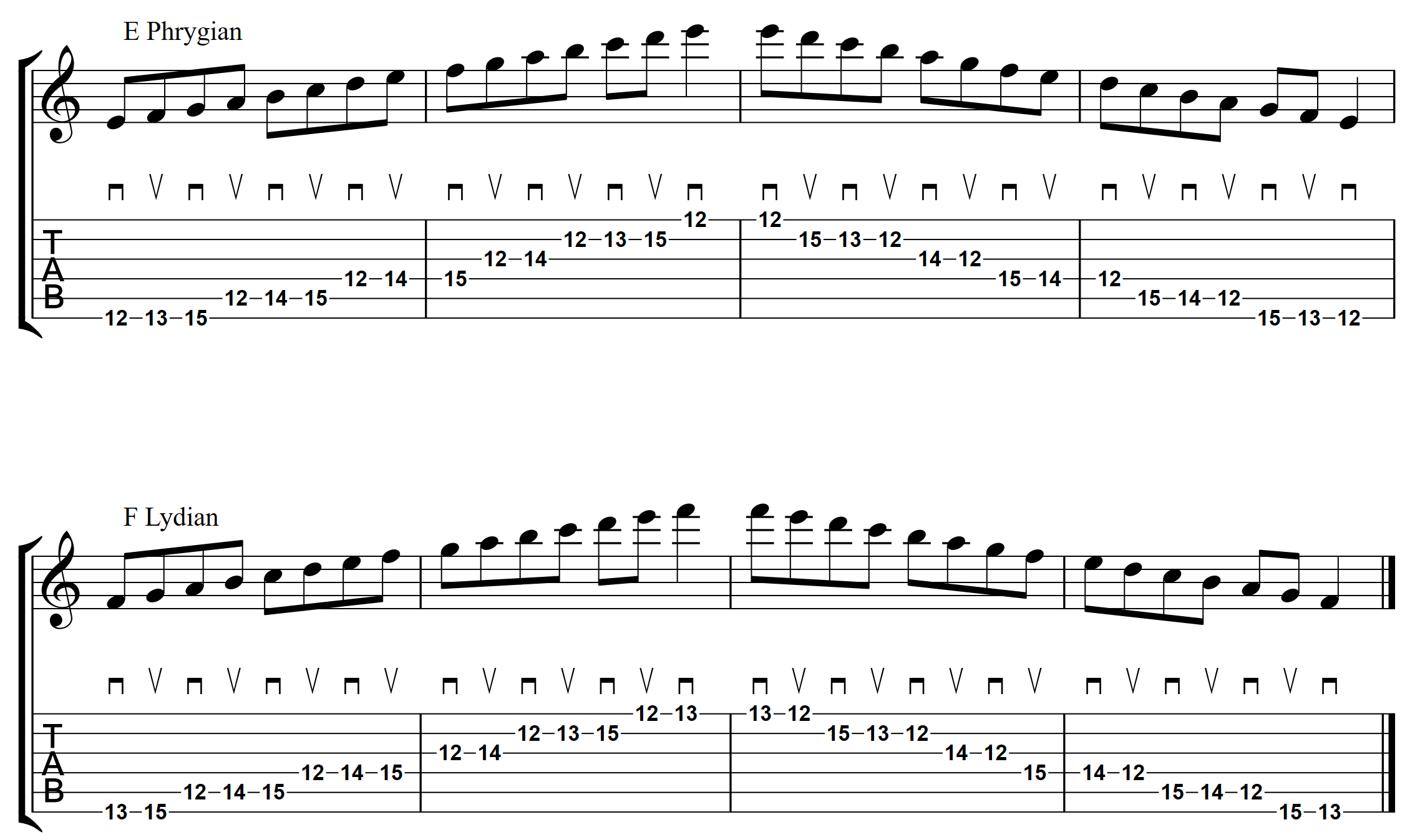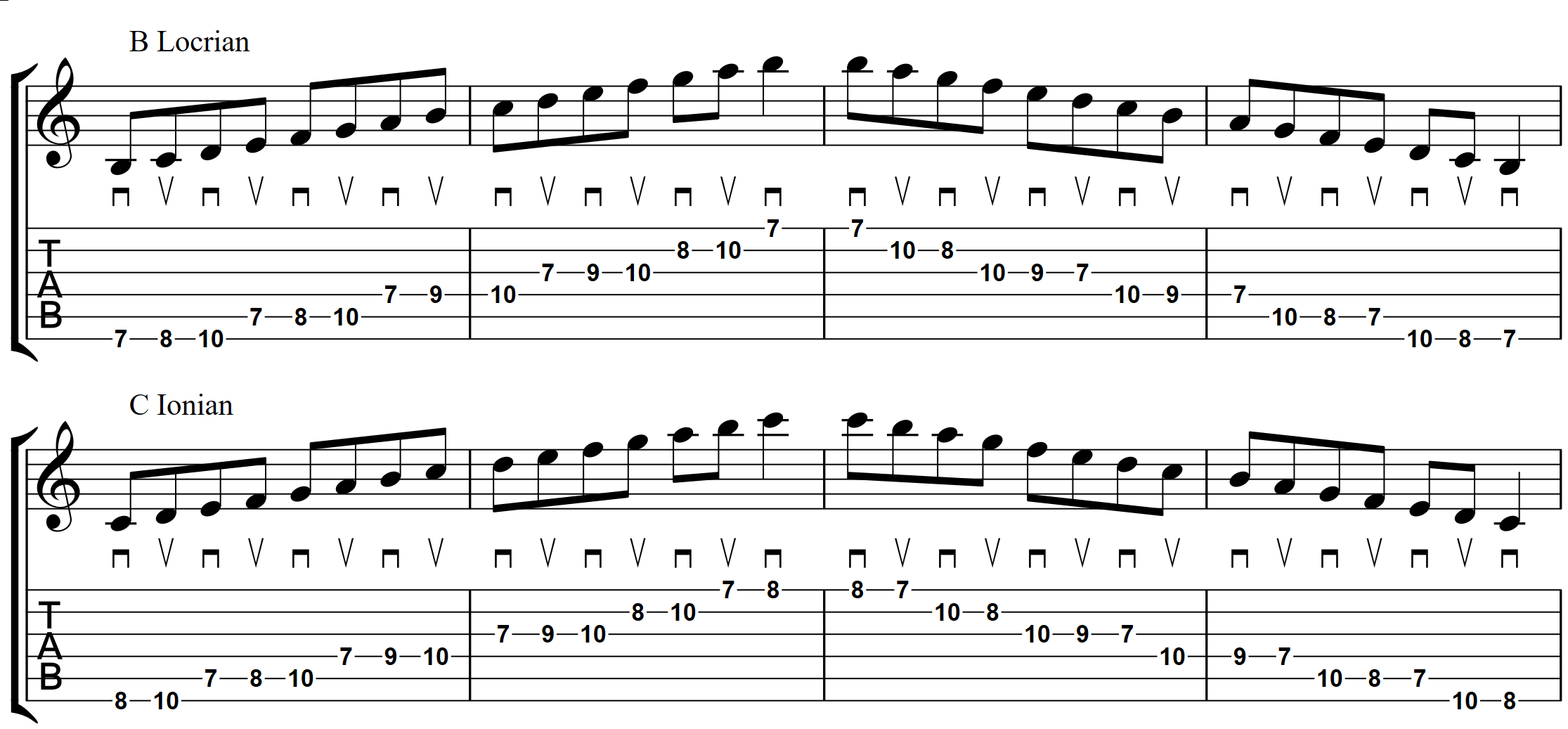Make Alternate Picking Automatic
Doing alternate picking is not difficult, but getting it to be consistent is. These exercises will help.
First steps in learning alternate picking.
If you’ve been doing all downstrokes, or you’re new to this, you should check out my other website’s blog post on alternate picking, Alternate Picking Exercises (beginnerguitarlessons.com). This post shows you how to do alternate picking with the four finger exercise from my book and also the minor pentatonic scale. The last exercise walks you through incorporating alternate picking into the diatonic scale.
Getting to the next level of alternate picking mastery
The exercise I like to have students do to really master picking and get it to the point where they don’t have to think about it is to go back and forth between the Locrian and Ionian modes, and then the Phrygian and Lydian modes. In both cases, there’s a lot of similarity between the two patterns, but you’re adding or subtracting one note at the beginning and end. This curveball forces you to really focus on going down and up regardless of what you did on each string.
Check out the tablature for the exercise below:
You should also do the same thing with Phrygian and Lydian. Follow the tablature below.

The goal here is to try to trip yourself up but also to keep practicing these scales back and forth until you don’t get tripped up. When you go from Ionian to Dorian, it’s not as confusing to the picking hand because you’re moving up to a different position on the fretboard. It’s obvious to your hand (which sort of has it’s own brain) that it’s starting a new scale. But with these two pairs of modes/scales, you’re staying in the same position, but starting on a higher note when you play the second scale. Furthermore, when you play E Phrygian, the F note is played with an upstroke, but in F Lydian, it’s played with a downstroke. In fact, the picking direction for all of the notes get reversed when you play the second scale, that’s why it’s so confusing to our muscle memory.
But that is how we get better as guitarists – confront things that are difficult or confusing and practice them until they are not.
